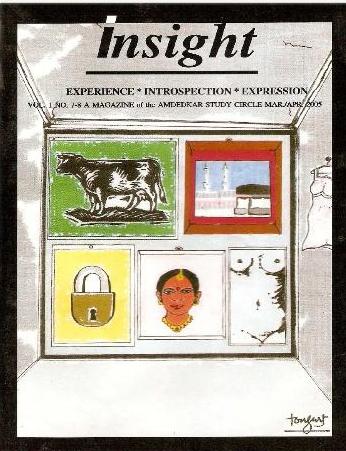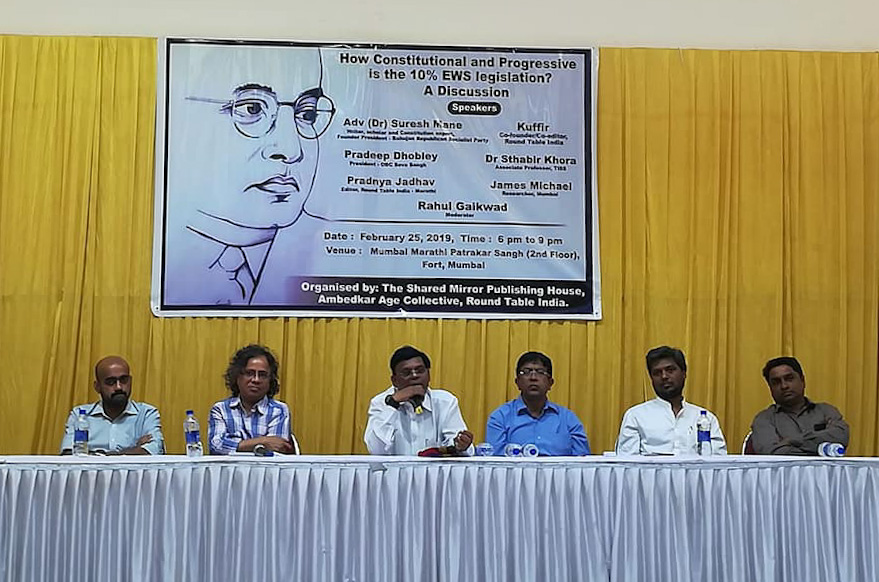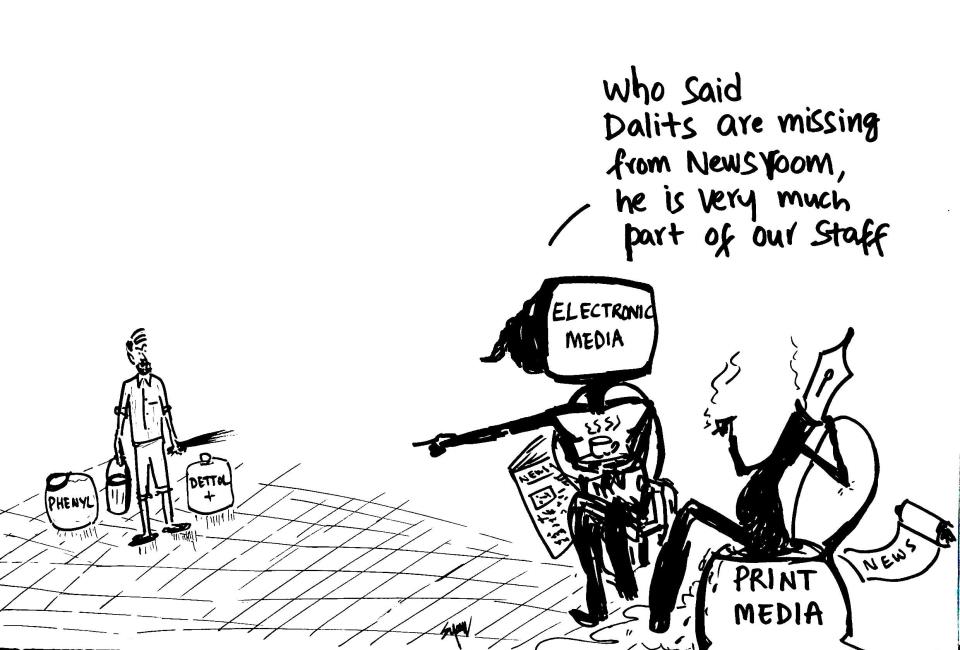Dr. Ravichandran Bathran
An article written by Assa Doron and Robin Jeffrey appeared in thewire.in on 24th May 2018 under the title “Let’s Talk about Clean India’s Unspeakable Secret”. Both have been writing on India’s waste/garbage seen in public places. To put it differently, they are critics of India’s unclean public spaces and the disposal of waste. They have been advocating for a change. They adopt the Gandhian method that focuses on changing the behaviour of caste Hindus who expect others to clean. In other words, they do not find any problem with the Gandhian method. The method adopted by the Prime Minister Mr. Narendra Modi and his signature campaign Swachh Bharat eulogises the same. This method has undergone no scrutiny at all. What aspect of change does the Gandhian approach preach? Asking the Safai Karmacharis to also do cleaning as a service is nothing less than upholding the Caste system through the back door.

The article is a comment made on the release of Swachh Survekshan rankings. Indore in Madhya Pradesh has been ranked first as the cleanest city for the second consecutive year. At the beginning of the article itself they argue that Indore is doing something right about cleanliness. They narrate the methodology used by the municipal corporation in keeping the city clean. It uses close to 10,000 employees, and has deployed 1000 ragpickers, to segregate waste in the daily waste collection vehicles that collect from every household.
The authors argue that to be a clean city it needs two ingredients to manage a town’s household: those are waste, the second caste and prejudice. According to them, Indore seems to have found and addressed the first one but it’s not clear what the author’s position is on the second one and whether Indore has succeded in addressing it. It is the ‘unspeakable secret’ all along the article. The article discusses about Indore’s methodology in making the city clean but doesn’t explain the status of sweepers in the very same town. Instead, it gives references to Gujarat, and a book written by Hazari nearly 70 years ago. The problem is that with such random references which do not focus on Indore, the authors make a vague argument about the relationship between caste, sanitation and cleanliness. There is a strong relation between waste, caste and labour but the authors certainly fail to build this argument in the context of Indore. Most importantly, Indore’s or Swachh Bharat’s aim of achieving a clean city. If this goal is achieved without breaking the caste stigma then the problem is with the approach itself. The authors fail to recognize the problem with this approach.
Most importantly they argue “For them [Safai Karamcharis] to do the systematic work required of modern towns and cities, they need to be rewarded, trained and valued.” What is the reward the authors are talking about? Are they discussing that they are not being paid for their work? Also, aren’t they trained for the work? Who should value whom? Basically the authors don’t problematise the present functioning of the system in context to waste and Safai Karamcharis. Rather as a solution, they argue change of behaviour is needed. We should move away from seeing Safai Karamcharis as some volunteers doing a social work, to recognise that it’s a work they are doing and treat them and their work equally. There is hardly any difference between the authors arguing to reward Safai Karamcharis and Narendra Modi arguing that it’s a spiritual experience and they must have been rewarded. Most importantly, though they agree there is a particular caste engaged in cleaning they don’t problematise it, rather respect, dignity, training, and fair reward for steady work are the essence of their argument. In other words, the article doesn’t offer anything to Safai Karamcharis.
The Safai Karamcharis do not argue for respect and dignity in isolation, but that they need to be released from the chains of scavenging. For which neither the authors, nor Modi nor Gandhi dosn’t have an argument to make. As I repeatedly argue, the Gandhian method can never remove bhangis/arundhathiyars from the shackles that will continue to entangle them.
Let’s have a glimpse of their argument made in the past. From the collected volume “The City and the South Asia” (2014) published by Harvard South Asia Institute, where they have a short article “Waste and the City” P57-59. In the article, they both talk about the statistics of waste produced in India comparing it with US, North America and Europe. While discussing about waste that is produced and disposed, they talk about the dangers of living next to garbage They suggest ways to reduce waste in urban India and demand mechanized and institutionalised collection methods. Caste never figured in this writing; nor in Asian Currents December 2014, where their article titled “Modi’s new broom aims to sweep India clean” p 19-21 appears. In this article, they argued whether BJP can make the Swachh Bharath campaign more than a picnic for advertising agencies. And critiqued whether the campaign will create widespread waste management that is systematic, effective and sustainable. Largely, they were arguing to adopt a systematic method to deal with waste removal.
In November 2014 ISAS Special Report, ‘Clean India!’ Miles to Go Before We Sweep?’, Robin Jeffrey responds to the Swachh Bharat campaign introduced by PM Narendra Modi. As Indian cities expand, they face two qualities: one, unheard of population density and the other is caste. The article discusses the amount of garbage produced and goes unprocessed. He argues it rots and spread diseases, and henceforth disposal should be adopted and the government should follow other countries. He argues the present problem faced by Indian cities are the same problems faced in nineteenth century Europe, North America and Australia. Citizens realised the relation between the city’s filth and diseases and the local authorities took the task of providing clean water, sewage and drainage to all its members. The other problem in India is caste where a large number of Dalits work as Safai Karamcharis. For the author, the problem emerges as in caste society it’s believed the collection of waste is someone else’s job so they leave it dirty. To change such deep feelings will require persistence and example. Having a Prime Minister from a lower caste, who is not a dvijya or twice-born, who has a remarkably strong personal mandate and who makes Clean India a signature campaign, is an important start. Sadly it is the same Prime Minister, Narendra Modi who wrote in his unrelased book ‘Karmayog’ that scavenging was a “experience in spirituality” for the Valmikis’ (2007). Even in this article it’s unclear what does the author aim at when speaking about caste in waste. The only thing they argue in the present and in the past, is about change of mindset of those thinking that waste is someone else’s job to clean. They don’t dismantle the root of such thinking, caste, but go with Gandhi’s ideology that everyone should clean. Such an approach undermines the work of removal of garbage and never addresses the caste question. It also erases those Safai Karamcharis who have been removing garbage as an enforced labour for generations. They don’t appear in any photo ops in these writings.
The authors press for clean places through institutionalized mechanisms, their demand for clean public spaces arises from one of the reasons they advocate: cleanliness is against the spread of diseases. The western approach to sanitation is a response to the contagious diseases. This approach has serious loopholes and is very patriarchal. It important we design our own sanitation policy with lessons from west but we need not copy the same methodology that they adopted. In India caste is a serious problem and we should derive a practice that removes Safai Karamcharis from the chain of this particular work. For which we have to start from the beginning to study what is waste in the First Place.
~~~
The author is a Founder member of Dalit Camera.
Illustration courtesy: Unnamati Syamasundar.










